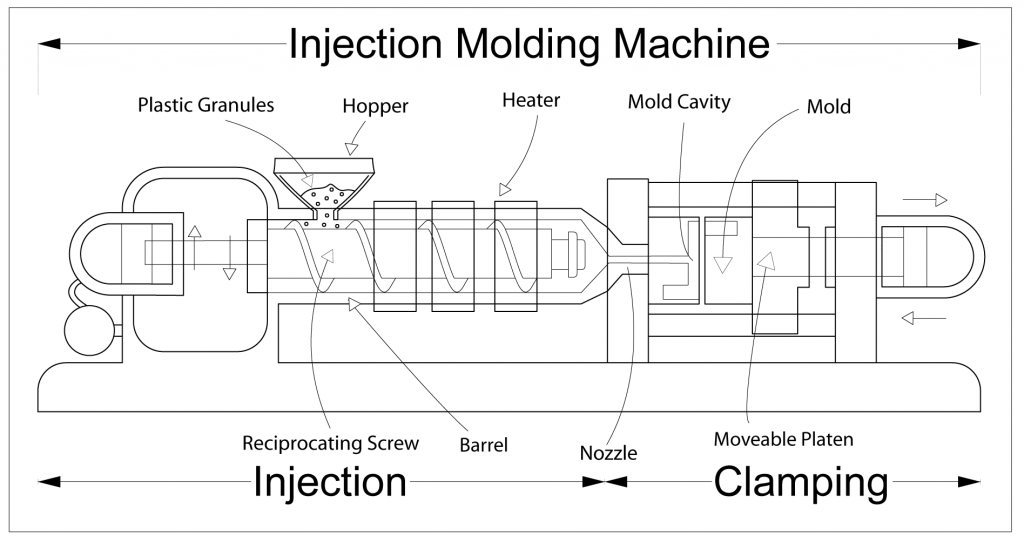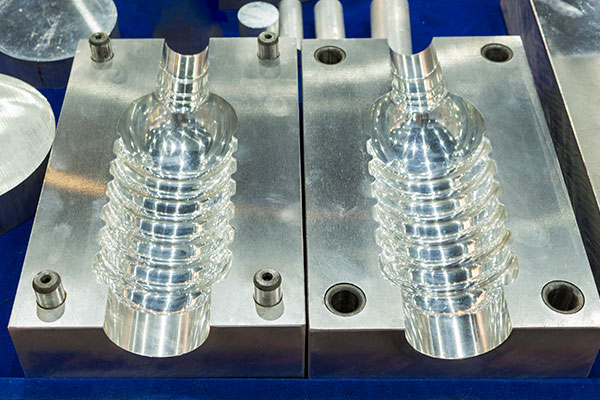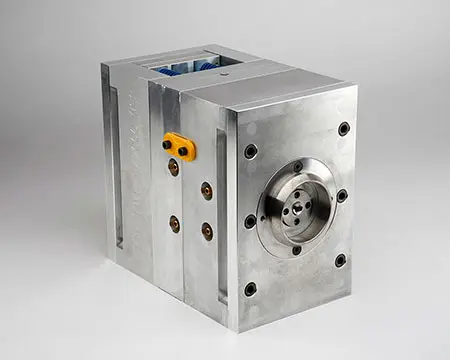The Benefits of Using Plastic Injection Molding for Customized Parts Manufacturing
The Benefits of Using Plastic Injection Molding for Customized Parts Manufacturing
Blog Article
The Future of Plastic Shot Molding: Trends and Advancements to View
As the plastic shot molding sector evolves, numerous essential fads are emerging that guarantee to improve its landscape. Automation and clever production techniques are readied to boost productivity, while the shift towards sustainable products shows an expanding ecological awareness. Advancements in 3D printing are paving the way for unprecedented design flexibility. These advancements additionally bring forth difficulties that need cautious consideration. Understanding how these elements will certainly connect and affect future techniques is critical for stakeholders aiming to browse this transformative period efficiently.
Automation and Smart Production
As the plastic injection molding market evolves, automation and wise manufacturing are taking spotlight, reinventing production procedures - Plastic Injection Molding. The combination of advanced modern technologies such as robotics, IoT (Web of Things), and expert system is making it possible for makers to enhance performance, minimize operational expenses, and improve item quality. Automated systems simplify process, minimizing hands-on intervention and boosting throughput, which is important in meeting the increasing need for fast manufacturing cycles
Smart manufacturing modern technologies help with real-time surveillance and data analysis, permitting business to maximize device efficiency and forecast maintenance requirements. This proactive method not just minimizes downtime however additionally extends the life expectancy of tools. The use of collective robotics, or cobots, boosts the adaptability of production lines, enabling workers and makers to operate side by side safely and effectively.
The fostering of automation in plastic shot molding is not just a fad yet a strategic crucial for organizations aiming to remain competitive in a global market. By utilizing these innovations, makers can accomplish greater accuracy, minimize waste, and adapt quickly to changing client demands, positioning themselves for lasting growth in a progressively automated future.
Lasting Products and Practices
The press towards automation and wise manufacturing has paved the means for a better focus on lasting materials and practices within the plastic injection molding sector. Firms are significantly looking for environment-friendly choices to standard petroleum-based plastics, causing the adoption of bio-based and recycled products. These lasting materials not only lower ecological effect yet additionally line up with consumer demand for greener items.

Moreover, cooperation between producers, material vendors, and ecological companies is promoting advancement in the growth of lasting materials that satisfy performance requirements without jeopardizing high quality. As guidelines around plastic usage end up being stricter, the industry is poised to adapt by welcoming these lasting techniques, making sure long-lasting feasibility and minimizing reliance on non-renewable resources. The integration of sustainability right into plastic shot molding is not just a pattern; it is ending up being a necessary element of corporate responsibility and functional quality.
Advancements in 3D Printing
Recent advancements in 3D printing modern technology are dramatically changing the landscape of plastic injection molding. The integration of additive production processes enables the quick prototyping of complicated geometries that were impossible or once tough to accomplish through typical techniques - Plastic Injection Molding. This capability not only accelerates item advancement cycles but additionally decreases product waste, aligning with the expanding demand for lasting production methods
Moreover, the introduction of hybrid production strategies, which integrate 3D printing and shot molding, provides manufacturers the capacity to produce complex designs while preserving the performance of automation. This technique enables the production of tailored parts tailored to certain consumer demands without giving up the speed and scalability that injection molding supplies.
In addition, developments in products, such as high-performance polymers and compounds specifically developed for 3D printing, are improving the useful capabilities of printed elements. These products can withstand greater anxiety and show boosted thermal homes, making them appropriate for even more requiring applications.
As 3D printing proceeds to evolve, its combination into plastic injection molding processes guarantees to boost performance, lower prices, and foster innovation in item design, positioning manufacturers to better meet the challenges of an open market.
Data Analytics and IoT Integration
Data analytics and the integration of the Internet of Things (IoT) are transforming plastic injection molding by offering producers with unprecedented insights into their procedures. By leveraging helpful hints real-time information accumulated from interconnected makers and sensing units, makers can keep an eye on efficiency metrics, determine ineffectiveness, and optimize production procedures. This data-driven technique assists in predictive maintenance, reducing downtime and expanding tools life expectancy.
Additionally, IoT integration allows for boosted high quality control. By constantly tracking variables such as temperature, cycle, and pressure times, makers can swiftly detect deviations from established parameters and make changes in genuine time. This not just enhances product uniformity but additionally decreases waste and scrap rates.
The blend of information analytics and IoT modern technologies also encourages producers to take on more dexterous production approaches. With access to thorough data analytics, companies can react to market needs with higher adaptability, adjusting manufacturing schedules and setups as required. This versatility is crucial in a quickly transforming production landscape.

Modification and Design Flexibility
How can personalization and style versatility improve the competitiveness of plastic shot molding? In a progressively diverse market, the capability to use customized options is extremely read the article important. Modification permits suppliers to fulfill certain client requirements, suiting special measurements, shapes, and functionalities that basic products might not accomplish. This adaptability not just promotes client loyalty yet additionally opens up methods for new business possibilities throughout different industries, from automotive to durable goods.
Improvements in design modern technologies, such as computer-aided style (CAD) and rapid prototyping, more reinforce this fad. These tools make it possible for designers to develop intricate geometries and elaborate patterns, which can be flawlessly integrated into the manufacturing process. As an outcome, producers can react swiftly to transforming consumer preferences and market needs.
Furthermore, the execution of modular tooling systems enhances layout versatility, enabling quicker modifications in between different product styles without extensive downtime. This versatility can bring about decreased preparations and reduced production expenses, making firms much Look At This more active and affordable. Inevitably, embracing customization and style adaptability in plastic shot molding not only boosts product offerings however likewise reinforces market positioning in an ever-evolving landscape.
Conclusion
The future of plastic injection molding is defined by substantial innovations in automation, sustainable practices, and ingenious products. The combination of IoT and information analytics will improve functional performance and predictive maintenance. Additionally, the adoption of bio-based and recycled products, together with development in 3D printing, will promote sustainability within the industry. Personalization with modular tooling and quick prototyping will certainly make it possible for manufacturers to remain competitive and receptive to the vibrant demands of the market.

The future of plastic shot molding is identified by significant developments in automation, lasting techniques, and cutting-edge materials.
Report this page